In the field of sweets, chocolate, and wafers, the selection of raw materials plays a crucial role in determining the taste, texture, and overall quality of the final products. Here are some common raw materials used in the production of sweets, chocolates, and wafers:
Sweets:
Sugar:
White sugar, brown sugar, powdered sugar.
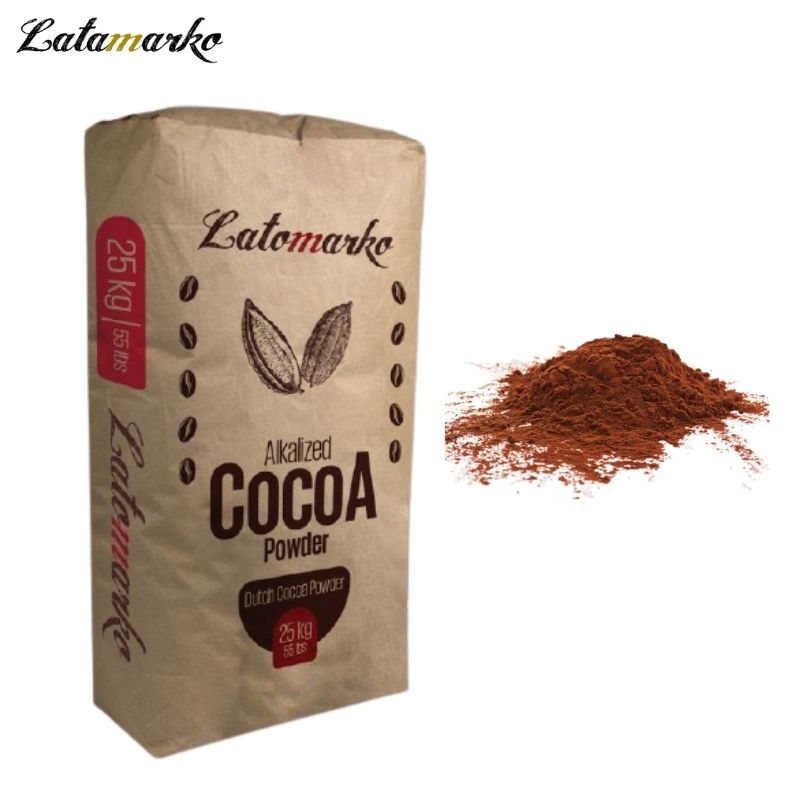
Flour:
All-purpose flour, pastry flour.
Flour is a versatile ingredient widely used in cooking and baking. It is a finely ground powder made from grains, legumes, nuts, seeds, or roots. Here are some common types of flour and their characteristics:
- All-Purpose Flour:
- Source: Typically made from a blend of hard and soft wheat.
- Properties: Versatile and suitable for a wide range of recipes, including baking, cooking, and thickening sauces.
- Protein Content: Moderate protein content, making it suitable for various applications.
- Bread Flour:
- Source: Made from hard wheat varieties.
- Properties: Higher protein content, providing structure and elasticity to bread dough. Ideal for yeast-based recipes.
- Cake Flour:
- Source: Primarily made from soft wheat.
- Properties: Lower protein content, producing tender and delicate baked goods. Ideal for cakes and pastries.
- Whole Wheat Flour:
- Source: Made from the entire wheat kernel, including bran, germ, and endosperm.
- Properties: Higher fiber and nutrient content compared to refined flours. Adds a nutty flavor and denser texture to baked goods.
- Pastry Flour:
- Source: Made from soft wheat.
- Properties: Falls between all-purpose and cake flours in terms of protein content. Suitable for delicate pastries and pie crusts.
- Self-Rising Flour:
- Source: Typically all-purpose flour with added baking powder and salt.
- Properties: Convenient for recipes that require leavening agents. Suitable for biscuits, pancakes, and certain cakes.
- Semolina Flour:
- Source: Coarser texture, often made from durum wheat.
- Properties: Used in pasta making and certain desserts. Adds a slightly grainy texture.
- Gluten-Free Flour:
- Source: Various sources, such as rice, tapioca, almond, or chickpea.
- Properties: Suitable for individuals with gluten intolerance. Blends may be used as a one-to-one substitute for regular flour in many recipes.
- Almond Flour:
- Source: Ground blanched almonds.
- Properties: High in fats and adds a rich, nutty flavor. Commonly used in gluten-free and low-carb baking.
- Coconut Flour:
- Source: Ground coconut meat.
- Properties: High in fiber, low in carbohydrates. Adds a subtle coconut flavor. Often used in gluten-free and paleo recipes.
When using flour in recipes, it’s crucial to choose the right type based on the desired outcome. Additionally, storage conditions can affect the quality of flour, so it’s recommended to store it in a cool, dry place.

Fats and Oils:
-
- Butter, margarine, shortening.
Fats and oils are essential components in cooking and baking, providing moisture, flavor, and texture to a wide range of dishes. Here’s a brief overview of butter, margarine, and shortening:
- Butter:
- Source: Derived from cream, usually from cow’s milk.
- Composition: Primarily consists of milk fat, water, and milk solids.
- Flavor Profile: Rich, creamy, and distinctive flavor.
- Properties: Solid at room temperature, melts when heated. Used in baking, sautéing, and as a spread.
- Varieties: Salted and unsalted (sweet cream) butter are common.
- Margarine:
- Source: Originally vegetable oils, but formulations may include a combination of oils, water, and milk solids.
- Composition: Typically contains hydrogenated or partially hydrogenated oils, emulsifiers, and flavorings.
- Flavor Profile: Varied, with some margarines designed to mimic the taste of butter.
- Properties: Available in stick or tub form, spreadable. Some varieties are suitable for baking.
- Considerations: Some margarines may contain trans fats, so it’s advisable to check the ingredient list.
- Shortening:
- Source: Originally made from hydrogenated vegetable oils, often soybean or palm oil.
- Composition: Solid at room temperature, with a high melting point.
- Flavor Profile: Neutral taste.
- Properties: Solid at room temperature, versatile for baking and frying. It gives a tender and flaky texture to baked goods.
- Considerations: Some shortenings are now available with zero trans fats, and vegetable-based options may be preferred.
Considerations:
- Health Considerations: Butter contains saturated fats, and while it provides flavor, moderation is advised. Margarine and shortening may have formulations with varying levels of saturated and trans fats.
- Substitutability: Butter, margarine, and shortening are often interchangeable in certain recipes, but the choice may impact the final taste and texture.
- Texture in Baking: Butter adds richness and flavor to baked goods, margarine provides a spreadable quality, and shortening contributes to a tender and flaky texture.
- Dietary Preferences: Individuals with dietary preferences or restrictions may choose specific fats and oils based on their nutritional needs.
It’s essential to consider the intended use and flavor requirements when selecting fats and oils for cooking and baking. Additionally, keeping an eye on nutritional information and ingredient lists can help make informed choices.
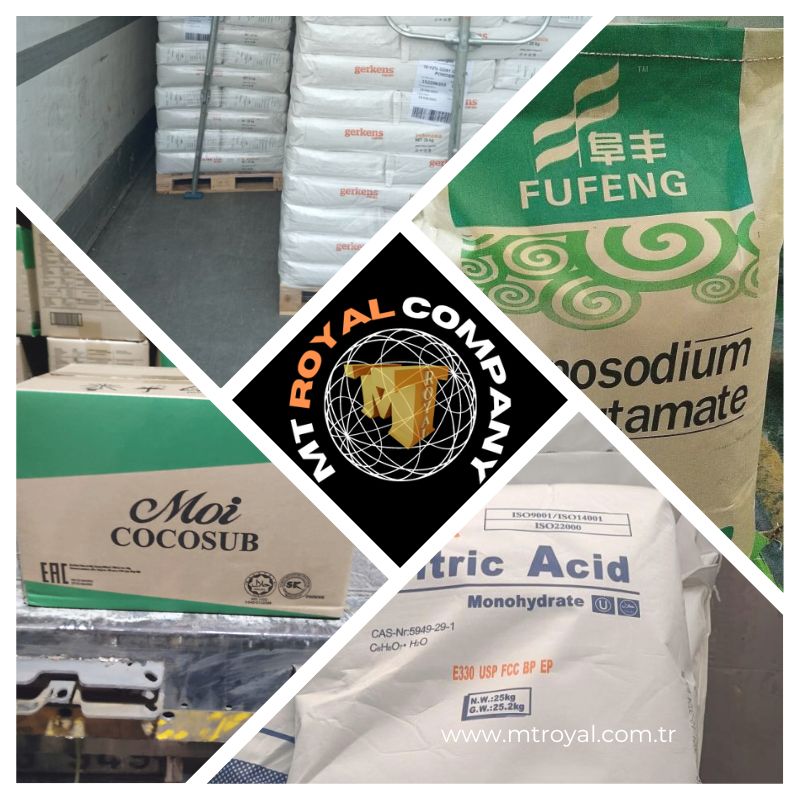
Dairy Products:
-
- Milk, condensed milk, cream.
Dairy products play a crucial role in many culinary applications, providing richness, flavor, and moisture to a variety of dishes. Here’s an overview of milk, condensed milk, and cream:
Milk:
-
- Source: Usually from cows, but can also come from goats, sheep, or other mammals.
- Composition: Contains water, lactose (milk sugar), fats, proteins (casein and whey), vitamins, and minerals.
- Types: Whole milk (full-fat), reduced-fat (2%, 1%), and skim milk (fat-free) based on varying fat content.
- Uses: Drinking, cooking, baking, making dairy-based sauces, and as a base for various dishes.
Absolutely, your summary of milk is accurate. Here’s a bit more detail on each aspect:
Source: Milk is primarily obtained from mammals, with cow’s milk being the most widely consumed. However, it can also be sourced from other animals like goats, sheep, buffalo, and even camels. The choice of milk source can influence taste, nutritional content, and its usability in different culinary applications.
Composition: Milk is a complex liquid containing a variety of components:
- Water: The main component, making up the bulk of the liquid.
- Lactose (Milk Sugar): A natural sugar present in milk.
- Fats: Milk contains varying amounts of fat, contributing to its richness. The fat content determines whether it’s whole milk, reduced-fat, or skim milk.
- Proteins: The two main proteins are casein and whey, each serving different purposes in culinary applications.
- Vitamins and Minerals: Milk is a good source of essential nutrients, including calcium, vitamin D, vitamin B12, and others.
Types: Milk is categorized based on its fat content:
- Whole Milk (Full-Fat): Contains about 3.5-4% fat. It has a rich and creamy flavor.
- Reduced-Fat (2%, 1%): The fat content is reduced to 2% or 1%, providing a balance between flavor and lower fat content.
- Skim Milk (Fat-Free): Virtually fat-free, with less than 0.5% fat. It has a thinner consistency and is often used by those seeking lower fat options.
Uses: Milk is a versatile ingredient used in various ways:
- Drinking: Consumed as a beverage, often with breakfast or as a refreshment.
- Cooking and Baking: Used in a wide range of recipes for soups, stews, sauces, custards, and baked goods.
- Dairy-Based Sauces: The foundation for creamy sauces like béchamel or Alfredo.
- Base for Dishes: Acts as a base for dishes like rice pudding, oatmeal, and cereal.
Milk’s unique combination of nutrients and its ability to add creaminess and flavor make it a fundamental ingredient in countless culinary creations.

Condensed Milk:
-
- Source: Typically cow’s milk.
- Composition: Sweetened condensed milk includes sugar, and both types (sweetened and unsweetened) have had much of the water removed.
- Flavor Profile: Sweet and creamy.
- Uses: Commonly used in desserts, ice creams, and beverages. Sweetened condensed milk is particularly popular in recipes like fudge and caramel.
Your summary of condensed milk is accurate. Here’s a bit more detail on each aspect:
Source: Condensed milk is typically made from cow’s milk. The process involves removing water from regular milk to create a thicker, more concentrated product.
Composition:
- Sweetened Condensed Milk: Besides the concentrated milk, sweetened condensed milk includes sugar. This addition gives it a sweet taste, making it a popular ingredient in various desserts.
- Unsweetened Condensed Milk: This type does not contain added sugar, providing a less sweet option for recipes where additional sweetness is not desired.
Flavor Profile: Condensed milk has a sweet and creamy flavor due to the high sugar content in sweetened condensed milk. The unsweetened version will have a more neutral taste, allowing it to be used in both sweet and savory dishes.
Uses: Condensed milk is a versatile ingredient with various applications:
- Desserts: A key ingredient in numerous desserts such as pies, puddings, and ice creams.
- Beverages: Added to coffee or tea for a sweet and creamy taste.
- Baking: Used in the preparation of cakes, cookies, and bars for added moisture and sweetness.
- Candies: Commonly used in the creation of fudges, caramels, and toffees.
Popular Recipes:
- Fudge: Sweetened condensed milk is a primary ingredient in many fudge recipes, contributing to its creamy texture.
- Caramel Sauce: Used to make caramel by heating sweetened condensed milk until it transforms into a rich and thick caramel sauce.
- Ice Cream: Often used in homemade ice cream recipes for a creamy and sweet base.
Condensed milk’s concentrated sweetness and creaminess make it a valuable ingredient in creating a wide array of indulgent and flavorful dishes. Whether used as a topping, filling, or main component, condensed milk adds richness to both sweet and savory culinary creations.
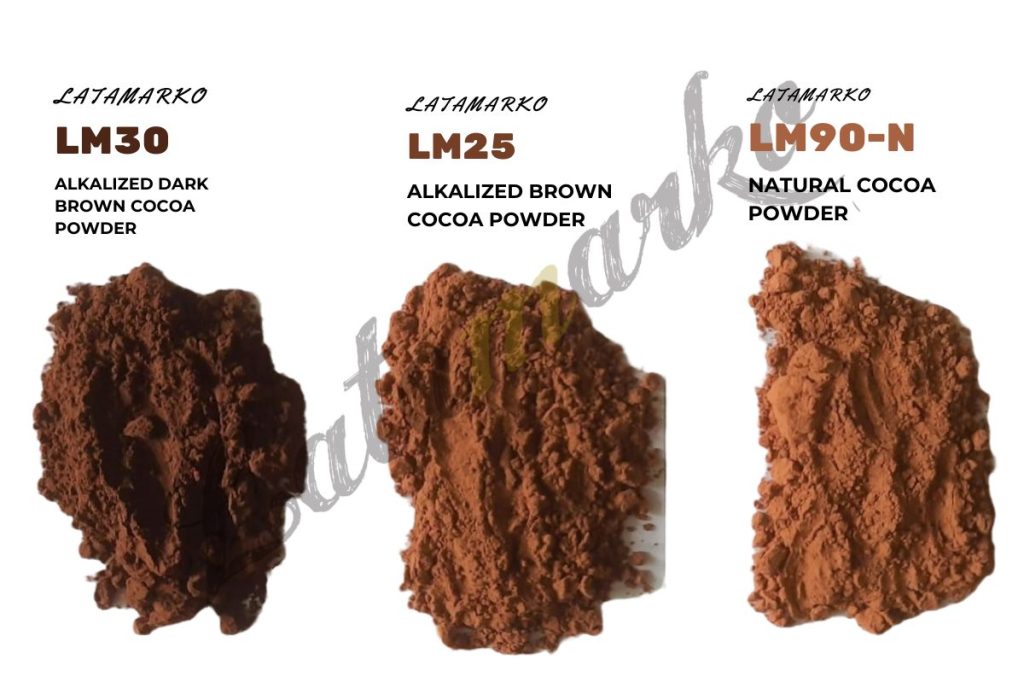
Cream:
-
- Source: The fatty layer that rises to the top of milk.
- Composition: Contains a higher proportion of milk fat compared to milk.
- Types: Various types based on fat content, including heavy cream (36% or more fat), whipping cream (30-36% fat), and light cream (18-30% fat).
- Uses: Adds richness to soups, sauces, and desserts. Whipped cream is made by whipping cream until it forms stiff peaks.
Your summary of cream is accurate. Here’s a bit more detail on each aspect:
Source: Cream is derived from the fatty layer that naturally rises to the top of milk. This layer is separated from the rest of the milk to produce cream.
Composition: Cream contains a higher proportion of milk fat compared to milk. The fat content is what gives cream its rich and creamy texture.
Types: The various types of cream are categorized based on their fat content:
- Heavy Cream: Also known as heavy whipping cream, it contains 36% or more fat. It has the highest fat content and is suitable for making whipped cream, rich sauces, and desserts.
- Whipping Cream: Contains between 30-36% fat. It’s lighter than heavy cream but still suitable for whipping into soft or stiff peaks.
- Light Cream: Contains 18-30% fat. It is lighter and often used in coffee, soups, and some desserts. It’s not suitable for whipping.
Uses: Cream is a versatile ingredient with various culinary applications:
- Rich Sauces: Adds a luxurious texture and flavor to sauces, such as Alfredo or creamy pasta sauces.
- Desserts: Used to create creamy and rich desserts like custards, ice creams, and puddings.
- Whipped Cream: When whipped, cream can be used as a topping for desserts, fruits, and beverages. It can be sweetened and flavored for different applications.
- Soups: Adds richness and thickness to certain soups and bisques.
Whipped Cream:
- Process: Whipped cream is made by beating cream until it incorporates air, resulting in a light and fluffy texture.
- Stiff Peaks: Whipping cream to the point of forming stiff peaks makes it suitable for piping onto desserts or as a topping for various dishes.
- Sweetening and Flavoring: Whipped cream can be sweetened with sugar and flavored with vanilla or other extracts to enhance its taste.
Cream’s ability to add richness and texture makes it a key ingredient in a wide range of savory and sweet dishes. The choice of cream type depends on the desired fat content and the intended application in a recipe.
Considerations:
- Fat Content: The fat content in these dairy products can influence the richness and texture of dishes. Whole milk has a higher fat content than reduced-fat or skim milk, and different creams offer varying levels of richness.
- Sweetness: Condensed milk is notably sweet due to the added sugar, making it an important ingredient in sweet desserts. Unsweetened condensed milk is also available for recipes where added sweetness is not desired.
- Whipping Ability: Cream, especially heavy cream, has the ability to be whipped into peaks. This makes it a versatile ingredient for desserts and toppings.
- Substitutions: In cooking and baking, these dairy products can often be substituted for one another, but adjustments may be needed to achieve the desired taste and texture.
- Culinary Uses: Milk, condensed milk, and cream are foundational ingredients in a wide range of dishes, both sweet and savory, contributing to flavor, texture, and moisture.
When choosing dairy products for cooking or baking, consider the specific fat content and flavor profile desired for the intended dish. Each of these dairy items brings its unique characteristics to culinary creations.
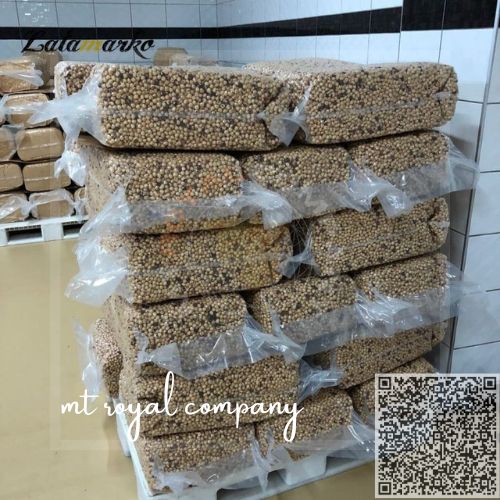
Nuts and Seeds:
-
- Almonds, walnuts, hazelnuts, pistachios.
Nuts and seeds are not only delicious snacks but also versatile ingredients used in a variety of culinary applications. Here’s a brief overview of almonds, walnuts, hazelnuts, and pistachios:
Almonds:
- Type: Almonds are seeds of the fruit of the almond tree.
- Flavor Profile: Almonds have a mildly sweet and nutty flavor.
- Texture: Almonds can be consumed raw, roasted, or blanched. They are also ground into almond flour for baking.
- Uses: Almonds are used in both sweet and savory dishes, including almond butter, almond milk, and various desserts. Sliced or chopped almonds often garnish salads, yogurt, and desserts.
Walnuts:
- Type: Walnuts are seeds of the drupe fruit from walnut trees.
- Flavor Profile: Walnuts have a rich, slightly bitter taste.
- Texture: Walnuts are commonly eaten raw or toasted. They are also used in baking, salads, and as a topping for oatmeal and yogurt.
- Uses: Walnuts add a distinctive flavor and crunch to salads, desserts, and baked goods like brownies and cookies. They are a good source of omega-3 fatty acids.
Hazelnuts:
- Type: Hazelnuts, also known as filberts, are the seeds of the hazel tree.
- Flavor Profile: Hazelnuts have a rich, sweet flavor with a hint of bitterness.
- Texture: Hazelnuts are often roasted to intensify their flavor and remove their skins. They can be eaten whole, chopped, or ground into hazelnut flour.
- Uses: Hazelnuts are used in both sweet and savory dishes, such as chocolate spreads like Nutella, pralines, and desserts. They can also be added to salads, pilafs, and roasted vegetables.
Pistachios:
- Type: Pistachios are seeds of the drupe fruit from the pistachio tree.
- Flavor Profile: Pistachios have a mildly sweet and nutty flavor.
- Texture: Pistachios are typically eaten roasted and salted, and their vibrant green color makes them visually appealing. They can be consumed as a snack or added to salads, desserts, and various dishes.
- Uses: Pistachios are used in both sweet and savory dishes. They are a popular ingredient in baklava, ice creams, and pesto. Ground pistachios are also used to coat meats or as a crust for fish.
Nuts and seeds not only provide flavor and texture to dishes but also contribute healthy fats, proteins, and various nutrients. Their versatility makes them a staple in many cuisines around the world.

Fruits:
-
- Dried fruits like raisins, apricots, dates.
Dried fruits are fruits that have had the majority of their water content removed, either naturally through sun-drying or through artificial dehydration methods. Here’s a brief overview of some popular dried fruits like raisins, apricots, and dates:
Raisins:
- Source: Raisins are dried grapes, typically dark-colored varieties.
- Flavor Profile: Raisins have a sweet and concentrated grape flavor.
- Texture: They are small, dark, and wrinkled.
- Uses: Raisins are commonly used in baking, trail mixes, cereals, and as a topping for yogurt or desserts. They are also popular in savory dishes like certain rice pilafs.
Apricots:
- Source: Dried apricots are made from the drying of fresh apricots.
- Flavor Profile: Dried apricots have a sweet and slightly tangy taste.
- Texture: They are chewy and often have a vibrant orange color.
- Uses: Dried apricots are enjoyed as a snack on their own, added to trail mixes, used in baking, or incorporated into salads and meat dishes for a sweet contrast.
Dates:
- Source: Dates are dried fruits from the date palm tree.
- Flavor Profile: Dates have a rich, sweet, and caramel-like flavor.
- Texture: They are soft and chewy, with a wrinkled appearance.
- Uses: Dates are often consumed as a snack, stuffed with nuts or cheese. They are also used in baking, especially in energy bars, cakes, and cookies. Dates are a common ingredient in Middle Eastern cuisine.
Considerations:
- Nutrient Content: Dried fruits retain most of the vitamins and minerals found in fresh fruits, but the drying process can concentrate sugars.
- No Added Sugar Options: Some dried fruits are available without added sugars, providing a natural sweetness.
- Versatility: Dried fruits are versatile and can be added to both sweet and savory dishes, enhancing flavor and providing a natural sweetness.
- Texture Variation: Dried fruits come in various textures, from the chewiness of raisins and apricots to the softness of dates.
While dried fruits are a convenient and nutritious snack, it’s essential to consume them in moderation due to their natural sugar content. They can be a flavorful addition to a balanced diet and contribute to a variety of culinary creations.

Flavorings:
-
- Vanilla extract, almond extract, citrus zest.
Flavorings play a crucial role in enhancing the taste and aroma of various dishes. Here’s a brief overview of three popular flavorings: vanilla extract, almond extract, and citrus zest:
Vanilla Extract:
- Source: Vanilla extract is derived from the vanilla bean, the fruit of the vanilla orchid.
- Flavor Profile: Vanilla extract imparts a sweet, warm, and rich flavor with floral undertones.
- Usage: Commonly used in baking, desserts, and sweet dishes. It complements the flavors of chocolates, custards, ice creams, and various baked goods.
- Form: Available in liquid form, usually with alcohol as a base.
Almond Extract:
- Source: Almond extract is typically made by combining bitter almond oil with a base, often alcohol.
- Flavor Profile: Almond extract has a strong and distinct almond flavor, adding a nutty and slightly sweet taste to dishes.
- Usage: Widely used in baking, especially in recipes for cakes, cookies, and marzipan. It enhances the almond flavor in dishes without the need for actual almonds.
- Form: Like vanilla extract, almond extract is typically liquid.
Citrus Zest:
- Source: Citrus zest is the outer, colored part of the peel of citrus fruits such as lemons, oranges, limes, or grapefruits.
- Flavor Profile: Citrus zest provides a bright, fresh, and zesty flavor, capturing the aromatic oils found in the fruit’s peel.
- Usage: Used in both sweet and savory dishes, citrus zest adds a burst of flavor to salads, marinades, desserts, and beverages. It is often used in baking for recipes like citrus-flavored cakes, cookies, and sauces.
- Form: Citrus zest is in solid form and is obtained by grating the outer layer of the fruit.
Considerations:
- Intensity: While vanilla extract and almond extract are typically used in small amounts due to their concentrated flavors, citrus zest can be used more liberally to add a pronounced citrus kick.
- Combinations: These flavorings can be used individually or in combination to create more complex and nuanced flavors in dishes.
- Alcohol Content: Vanilla and almond extracts often contain alcohol as a solvent. The alcohol evaporates during cooking, leaving behind the concentrated flavor.
- Freshness: For optimal flavor, it’s advisable to use high-quality extracts and fresh citrus zest.
These flavorings are essential in the culinary world, allowing chefs and home cooks to impart distinctive and delightful flavors to a wide array of recipes.

Gelling Agents:
-
- Gelatin, pectin for gummies and fruit-flavored sweets.
Gelling agents are substances that are used to give structure, thickness, and a gel-like consistency to various food products. Here’s a brief overview of two popular gelling agents: gelatin and pectin:
Gelatin:
- Source: Gelatin is a protein derived from collagen, which is found in the connective tissues of animals, usually obtained from bones and skin.
- Gelling Process: Gelatin requires hydration and heat to dissolve and then cool to set. It forms a gel-like structure when chilled.
- Texture: Gelatin produces a smooth, elastic, and jiggly texture.
- Uses: Widely used in the preparation of desserts like gelatin desserts (jelly or Jello), mousses, and certain confections. It is also used as a stabilizer in some dairy products and whipped creams.
- Varieties: Available in sheet, powder, and granulated form.
Pectin:
- Source: Pectin is a naturally occurring carbohydrate found in the cell walls of fruits, particularly in citrus fruits, apples, and berries.
- Gelling Process: Pectin requires sugar and acid to set. It forms a gel when the mixture is heated and then cooled.
- Texture: Pectin produces a firm and sometimes grainy texture, depending on the type and amount used.
- Uses: Commonly used in making jams, jellies, fruit preserves, and fruit-flavored sweets. It is often used in combination with fruits that are low in natural pectin to achieve the desired gel-like consistency.
- Varieties: Pectin is available in various forms, including liquid, powder, and low-sugar alternatives.
Considerations:
- Source Preferences: Gelatin is derived from animal sources, making it unsuitable for vegetarians and vegans. In contrast, pectin is plant-based and suitable for a broader range of dietary preferences.
- Setting Conditions: Gelatin requires refrigeration to set, while pectin sets at room temperature or during the cooling process.
- Flavor and Clarity: Pectin is known for producing a clearer gel and preserving the natural flavors of fruits. Gelatin can impart a neutral flavor.
- Applications: Gelatin is versatile and used in a variety of cold and hot desserts. Pectin is often associated with fruit preserves and gummies.
Both gelatin and pectin are valuable tools in the kitchen, providing the texture and structure needed for a range of culinary creations, from fruity sweets to elaborate desserts. The choice between them depends on the specific requirements of the recipe and dietary considerations.
Chocolate:
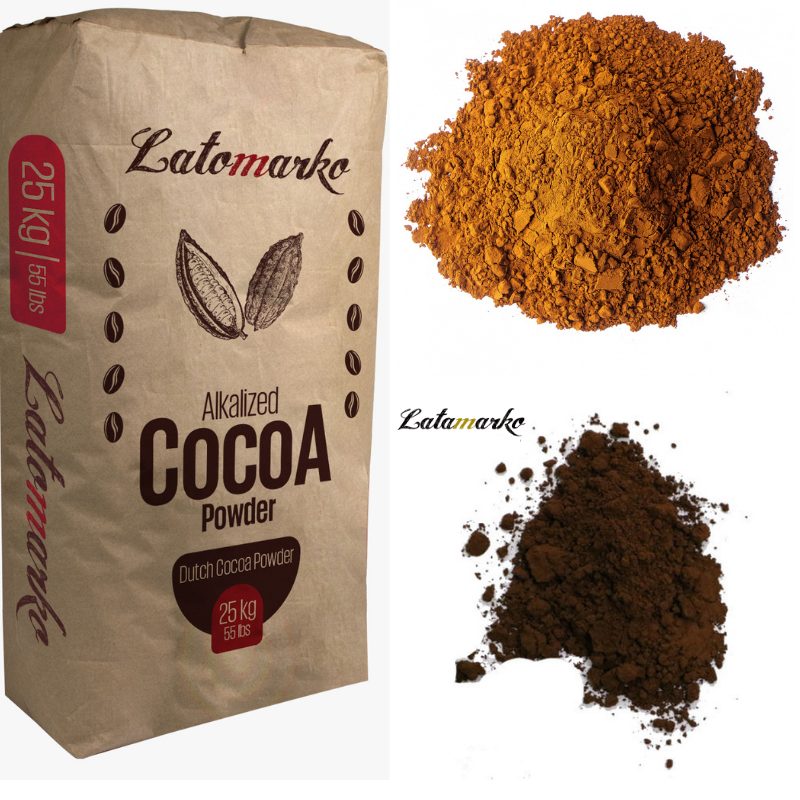
Cocoa Beans:
-
- The primary source for chocolate flavor.
- Source: Cocoa beans are the seeds contained within the large pods of the cacao tree. The tree is native to the deep tropical regions of Central and South America.
- Varieties: There are different varieties of cacao beans, each contributing unique flavor profiles to chocolate. The two main types are Criollo and Forastero, with Trinitario being a hybrid of the two.
- Harvesting: The beans are extracted from the cacao pods, fermented to develop flavor, dried, and then roasted.
- Composition: Cocoa beans contain cocoa solids and cocoa butter. The combination of these components contributes to the complex and rich taste of chocolate.
Chocolate Flavor Production:
- Roasting: After fermentation, the beans are roasted to develop flavor and reduce bitterness. Roasting also contributes to the characteristic brown color of chocolate.
- Grinding: The roasted beans are ground to create cocoa mass or chocolate liquor, which is a paste consisting of cocoa solids and cocoa butter.
- Pressing: Pressing the chocolate liquor separates cocoa solids from cocoa butter. The resulting cocoa powder is often used in baking and cocoa drinks.
- Conching: The remaining cocoa solids and cocoa butter are processed in a machine called a conch, which further refines the texture and flavor of the chocolate.
- Tempering: The chocolate is tempered, a process of controlled cooling and heating, to ensure it has a smooth texture and glossy finish.
Final Chocolate Products:
- Dark Chocolate: Contains a high percentage of cocoa solids, providing a strong and intense chocolate flavor.
- Milk Chocolate: Includes milk solids, sugar, and additional cocoa butter. It has a creamier and sweeter taste compared to dark chocolate.
- White Chocolate: Contains cocoa butter, sugar, and milk solids but lacks cocoa solids. It has a sweet and vanilla-like flavor.
The specific type of cocoa beans, the growing conditions, and the processing methods all contribute to the final chocolate’s flavor profile. High-quality chocolates often emphasize the unique characteristics of the cocoa beans, resulting in a nuanced and complex chocolate experience for the consumer.

Sugar:
-
- For sweetness.
Sugar is a sweet-flavored substance that plays a crucial role in adding sweetness to a wide range of food and beverage products. Here’s an overview of sugar and its role in culinary applications:
Source:
- Natural Sources: Sugar can be extracted from various natural sources, with the most common being sugarcane and sugar beets. Sugarcane is a tall grass primarily grown in tropical and subtropical regions, while sugar beets are root vegetables grown in temperate climates.
- Composition: The main component of sugar is sucrose, which is a disaccharide composed of equal parts glucose and fructose. During processing, sugar is extracted, refined, and crystallized into the granulated or powdered form commonly used in households.
Types of Sugar:
- Granulated Sugar: This is the most common type of sugar, consisting of small, fine crystals. It is versatile and used in a wide range of recipes.
- Powdered Sugar (Confectioners’ Sugar): Finely ground granulated sugar mixed with a small amount of cornstarch to prevent caking. It is often used for making icing and dusting desserts.
- Brown Sugar: Brown sugar is granulated sugar with added molasses. It comes in light and dark varieties, with dark brown sugar having a higher molasses content.
- Caster Sugar (Superfine Sugar): Finer than granulated sugar, it dissolves quickly, making it suitable for baking and making syrups.
- Turbinado Sugar: Also known as raw sugar, it is less refined than white sugar and retains some molasses, giving it a light tan color.
- Demerara Sugar: Light brown, partially refined sugar with large crystals and a subtle molasses flavor.
Role in Culinary Applications:
- Sweetening: The primary role of sugar is to add sweetness to a wide range of food and beverages, including desserts, baked goods, beverages, sauces, and dressings.
- Texture Improvement: Sugar contributes to the texture of baked goods by providing moisture, tenderness, and aiding in leavening.
- Caramelization: When exposed to heat, sugar undergoes caramelization, contributing to the golden-brown color and rich flavor in certain dishes.
- Preservation: In some traditional food preservation methods, sugar acts as a preservative by reducing water activity and inhibiting the growth of microorganisms.
Considerations:
- Moderation: While sugar adds sweetness and enhances flavor, excessive consumption of added sugars may have health implications. It’s important to consume sugar in moderation as part of a balanced diet.
- Alternative Sweeteners: Some people may opt for alternative sweeteners like honey, maple syrup, agave nectar, or artificial sweeteners based on taste preferences or dietary considerations.
Understanding the characteristics of different types of sugar and its role in various recipes allows chefs and home cooks to achieve the desired sweetness and texture in their culinary creations.

Cocoa Butter:
-
- Adds richness and texture to chocolate.
Cocoa butter is a crucial component in the production of chocolate, playing a key role in providing richness, texture, and the smooth mouthfeel characteristic of quality chocolate. Here’s an overview of cocoa butter and its contributions to chocolate:
Source:
- Extraction: Cocoa butter is derived from the fat of cocoa beans, which are the seeds of the cacao tree (Theobroma cacao). The beans are harvested, fermented, dried, roasted, and then pressed to extract cocoa butter.
Characteristics:
- Solid at Room Temperature: Cocoa butter is a unique fat that is solid at room temperature but melts at body temperature. This property contributes to the smooth and creamy texture of chocolate.
- Distinctive Aroma: Cocoa butter has a mild, chocolatey aroma that adds to the overall flavor profile of chocolate.
Role in Chocolate Making:
- Texture and Mouthfeel: Cocoa butter provides the silky, melt-in-the-mouth texture that is characteristic of well-made chocolate. It contributes to the smoothness and creaminess of the final product.
- Tempering: Cocoa butter is essential in the tempering process of chocolate. Tempering involves controlled heating and cooling to stabilize the cocoa butter crystals, preventing the formation of undesirable fat crystals and ensuring a glossy finish and a crisp snap in the final chocolate.
- Flavor Carrier: Cocoa butter acts as a carrier for the flavors in chocolate. It helps distribute the chocolate’s complex flavor compounds evenly, contributing to a harmonious taste experience.
- Shine and Appearance: Cocoa butter gives chocolate its shiny appearance. Properly tempered chocolate with well-dispersed cocoa butter will have a glossy surface, enhancing its visual appeal.
Varieties:
- Natural Cocoa Butter: Obtained through the pressing of roasted cocoa beans, it retains the characteristic flavor and aroma of chocolate.
- Deodorized Cocoa Butter: Some chocolate formulations use deodorized cocoa butter to minimize the chocolatey aroma, allowing other flavors to stand out more prominently.
Applications: Apart from chocolate production, cocoa butter is also used in the cosmetic industry for skincare products due to its moisturizing properties.
Understanding the role of cocoa butter in chocolate-making is crucial for achieving the desired quality and characteristics in the final product. The careful selection and processing of cocoa butter contribute significantly to the overall chocolate experience.

Milk Solids:
-
- For milk chocolate.
Milk solids are a key component in the production of milk chocolate, contributing to its creamy texture, smooth mouthfeel, and distinctive flavor. Here’s an overview of milk solids and their role in the creation of milk chocolate:
Source:
- Derived from Milk: Milk solids are derived from milk, typically cow’s milk, which contains proteins, lactose (milk sugar), and minerals.
Composition of Milk Solids:
- Proteins: Milk solids contain proteins, primarily casein and whey proteins, which contribute to the structure and texture of the chocolate.
- Lactose: Lactose is the sugar naturally present in milk. It adds sweetness to the chocolate and contributes to its overall flavor profile.
- Minerals: Milk solids also contain minerals such as calcium, which may influence the chocolate’s nutritional content.
Role in Milk Chocolate:
- Creaminess and Texture: The addition of milk solids to chocolate creates a creamier and smoother texture. Milk chocolate is known for its melt-in-the-mouth quality, which is a result of the combination of cocoa solids, cocoa butter, sugar, and milk solids.
- Balancing Sweetness: The natural sweetness from lactose in the milk solids helps balance the bitterness of cocoa and adds a pleasant sweetness to the overall chocolate flavor.
- Flavor Enhancement: Milk solids contribute to the complex flavor profile of milk chocolate, imparting a subtle dairy note and enhancing the overall taste experience.
- Nutritional Content: The inclusion of milk solids in milk chocolate increases its nutritional content, providing additional protein, sugar, and minerals compared to dark chocolate.
Milk Chocolate Composition:
- Cocoa Solids: The non-fat part of the cocoa bean, contributing to the chocolate’s flavor.
- Cocoa Butter: The fat extracted from cocoa beans, providing richness and texture.
- Sugar: Adds sweetness and balances the bitterness of cocoa.
- Milk Solids: Contribute creaminess, sweetness, and a distinctive milk flavor.
Varieties:
- Different Milk Chocolate Varieties: Milk chocolate can come in various formulations, with variations in the percentage of cocoa solids, cocoa butter, sugar, and milk solids. The specific ratios and quality of ingredients can result in different textures and flavor profiles.
Understanding the role of milk solids in milk chocolate is essential for chocolatiers and chocolate manufacturers to achieve the desired characteristics and quality in the final product. The balance of these components is key to creating a delicious and well-textured milk chocolate.

Emulsifiers:
-
- Lecithin to improve texture and prevent separation.
Lecithin is a common emulsifier used in the food industry, including in the production of chocolate. Emulsifiers are substances that help mix and stabilize ingredients that would normally separate, such as water and oil. In the case of chocolate, lecithin is often added to improve texture and prevent the separation of cocoa solids and cocoa butter. Here’s an overview of lecithin and its role in chocolate production:
Source:
- Natural Compound: Lecithin is a naturally occurring compound found in various plant and animal tissues. In the context of chocolate, it is often extracted from soybeans or sunflower seeds.
Role in Chocolate Production:
- Emulsification: Lecithin acts as an emulsifier, helping to disperse and stabilize cocoa particles (cocoa solids) in the cocoa butter. This process prevents the chocolate from becoming gritty or separating into cocoa solids and cocoa butter.
- Texture Improvement: The addition of lecithin contributes to a smoother and creamier texture in chocolate. It enhances the mouthfeel, making the chocolate more pleasant to eat.
- Reduced Viscosity: Lecithin can reduce the viscosity of chocolate, making it easier to handle during the manufacturing process. This is particularly important in processes like tempering and molding.
- Prevention of “Blooming”: Lecithin can help prevent the formation of “fat bloom” on chocolate. Fat bloom occurs when cocoa butter separates from the chocolate and rises to the surface, creating a whitish appearance. Lecithin helps maintain a stable and uniform structure, reducing the likelihood of fat bloom.
Applications:
- Chocolate Products: Lecithin is commonly used in various chocolate products, including bars, coatings, and confections.
- Bakery Products: Lecithin is also used in baking, where it can improve the texture of baked goods and help in the emulsification of ingredients.
- Other Food Products: Lecithin is utilized in a wide range of food products, serving as an emulsifier in salad dressings, margarine, and other processed foods.
Considerations:
- Source: While soy lecithin is widely used, there are also alternatives such as sunflower lecithin for those with soy allergies or specific dietary preferences.
- Amount Used: Only a small amount of lecithin is typically needed in chocolate production, and it is generally recognized as safe for consumption.
Lecithin is a versatile and effective emulsifier that plays a crucial role in achieving the desirable texture, stability, and appearance of chocolate products. Its use in the food industry extends beyond chocolate to various applications where emulsification is beneficial.
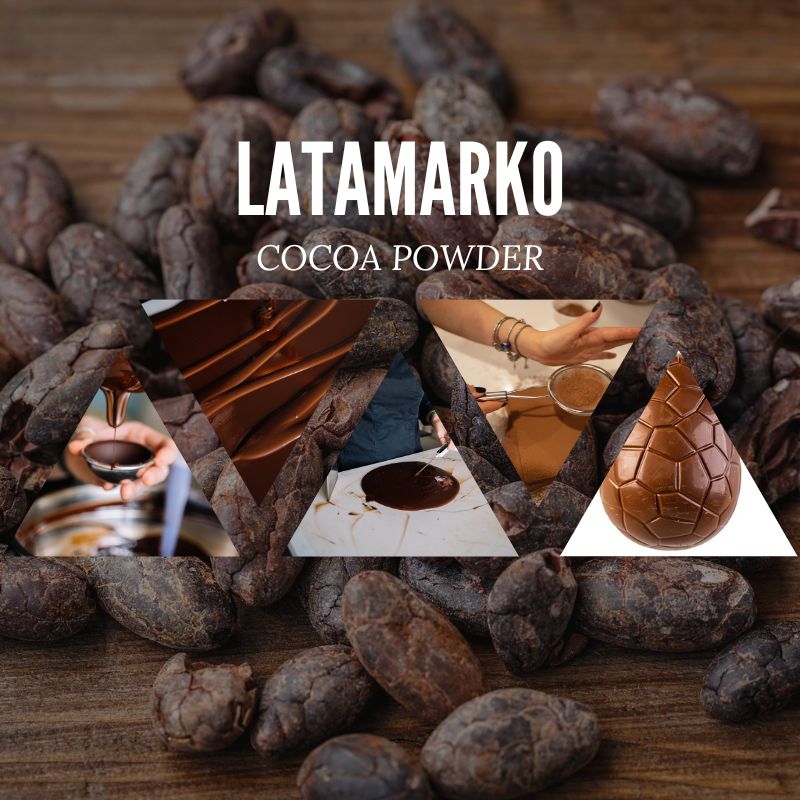
Vanilla:
-
- Enhances the overall flavor.
Vanilla is a widely used flavoring that enhances the overall taste and aroma of a variety of culinary creations. Derived from the pods of the vanilla orchid, vanilla adds a sweet and aromatic profile to both sweet and savory dishes. Here’s an overview of how vanilla enhances the overall flavor:
Flavor Profile:
- Sweet and Aromatic: Vanilla has a sweet and complex flavor with floral and aromatic notes. The primary compound responsible for the characteristic vanilla flavor is vanillin.
Ways Vanilla Enhances Flavor:
- Sweetness Enhancement: Vanilla can enhance the perception of sweetness in a dish without adding additional sugar. This makes it a valuable ingredient in reducing the overall sugar content while maintaining a satisfying sweetness.
- Aromatic Complexity: Vanilla adds a layer of aromatic complexity to a variety of dishes. Its fragrance can be subtle or bold, depending on the form used (extract, paste, or whole vanilla bean).
- Flavor Balancing: In many recipes, vanilla acts as a flavor balancer, harmonizing and rounding out the taste profile of other ingredients. It can mellow out overly sweet or acidic notes and contribute to a more well-rounded flavor.
- Warmth and Depth: The warm and rich flavor of vanilla contributes depth to desserts, baked goods, and beverages. It can elevate the overall taste experience, creating a more satisfying and comforting sensation.
Forms of Vanilla:
- Vanilla Extract: Extract is the most common form of vanilla used in liquid form. It is made by macerating vanilla beans in alcohol. Vanilla extract is versatile and suitable for a wide range of recipes.
- Vanilla Bean: Whole vanilla beans contain tiny black seeds that are scraped out and added to dishes for a more intense vanilla flavor. The pod itself can be infused into liquids for a subtler aroma.
- Vanilla Paste: A thick, concentrated paste that contains both vanilla extract and specks of vanilla bean. It provides a balance between the convenience of extract and the visual appeal of using whole beans.
- Vanilla Powder: Made by drying vanilla extract into a powder form. It is often used in dry mixes or when a dry consistency is preferred.
Applications:
- Baking: Vanilla is a staple in baking, used in cakes, cookies, muffins, and other sweet treats.
- Desserts: It is a common flavoring in ice creams, custards, puddings, and other desserts.
- Beverages: Vanilla enhances the flavor of beverages, including coffee, tea, smoothies, and cocktails.
- Sauces and Glazes: Vanilla can be used to flavor sauces, glazes, and syrups, adding a unique touch to savory dishes as well.
Understanding the nuances of vanilla and its various forms allows cooks and bakers to leverage its versatility and elevate the overall flavor profile of their creations.

Nuts, Fruits, and Inclusions:
-
- Almonds, hazelnuts, dried fruits, crisped rice, etc.
Nuts, fruits, and inclusions such as crisped rice are popular ingredients in various culinary applications, adding texture, flavor, and visual appeal to a wide range of dishes. Here’s a brief overview of almonds, hazelnuts, dried fruits, and crisped rice:
Almonds:
- Type: Almonds are seeds of the fruit of the almond tree.
- Flavor Profile: Almonds have a mildly sweet and nutty flavor.
- Texture: Almonds can be consumed raw, roasted, or blanched. They are also ground into almond flour for baking.
- Uses: Almonds are used in both sweet and savory dishes, including almond butter, almond milk, and various desserts. Sliced or chopped almonds often garnish salads, yogurt, and desserts.
Hazelnuts:
- Type: Hazelnuts, also known as filberts, are the seeds of the hazel tree.
- Flavor Profile: Hazelnuts have a rich, sweet flavor with a hint of bitterness.
- Texture: Hazelnuts are often roasted to intensify their flavor and remove their skins. They can be eaten whole, chopped, or ground into hazelnut flour.
- Uses: Hazelnuts are used in both sweet and savory dishes, such as chocolate spreads like Nutella, pralines, and desserts. They can also be added to salads, pilafs, and roasted vegetables.
Dried Fruits:
- Varieties: Dried fruits like raisins, apricots, dates, and cranberries are common.
- Flavor Profile: Dried fruits have concentrated sweetness and can have a chewy or soft texture.
- Uses: Dried fruits are versatile and used in baking, cooking, trail mixes, cereals, and as standalone snacks. They add natural sweetness and a burst of flavor to a variety of dishes.
Crisped Rice:
- Composition: Crisped rice is rice that has been expanded or puffed through a process involving heat and pressure.
- Texture: Crisped rice is crispy and adds a crunchy texture to foods.
- Uses: Commonly used as an inclusion in chocolate, granola bars, breakfast cereals, and confections. It provides a contrast in texture and can absorb flavors from other ingredients.
Applications:
- Baking: Nuts and dried fruits are often used in baking cookies, cakes, and bread. They add flavor, texture, and visual interest.
- Chocolate and Confections: Nuts, dried fruits, and crisped rice are popular inclusions in chocolate bars, truffles, and other confections, adding crunch and variety.
- Salads and Savory Dishes: Nuts and dried fruits are frequently used in salads, pilafs, and savory dishes to add texture and sweetness.
- Snack Mixes: A combination of nuts, dried fruits, and crisped rice can make delicious and nutritious snack mixes.
These ingredients offer a spectrum of flavors and textures, making them versatile additions to both sweet and savory culinary creations. The combination of nuts, fruits, and inclusions allows for endless possibilities in creating delightful and diverse dishes.
Wafers:
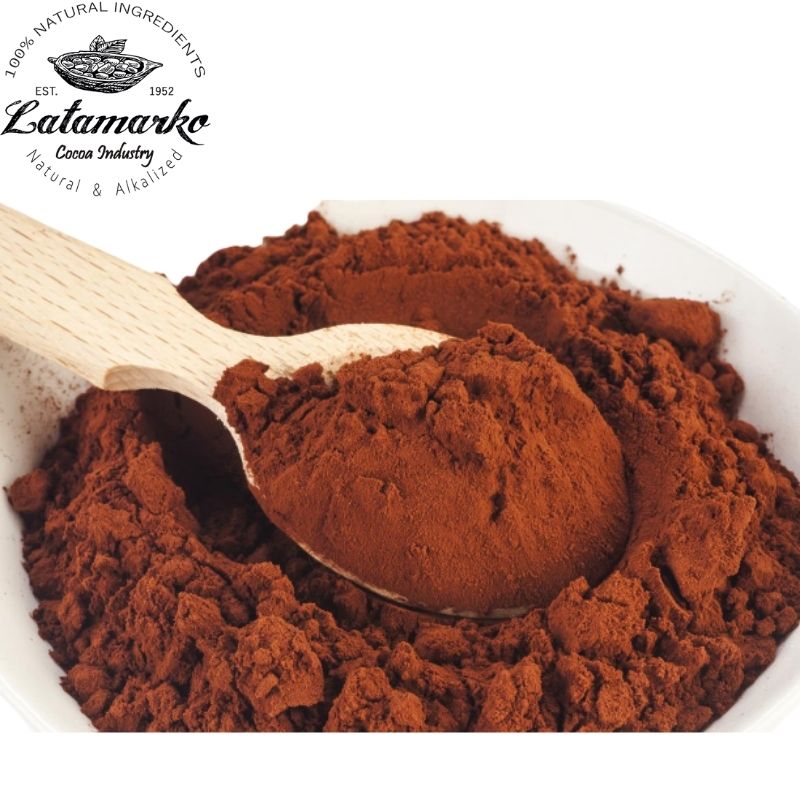
Flour:
-
- Wheat flour for the wafer sheets.
Wheat flour is a fundamental ingredient used in the production of wafer sheets. Wafer sheets are thin, crisp layers commonly found in various confections, such as ice cream cones, wafer cookies, and certain desserts. Here’s an overview of wheat flour’s role in making wafer sheets:
Wheat Flour:
- Source: Wheat flour is obtained by milling wheat grains. The grains are ground into a fine powder, and the resulting flour can vary in texture and protein content depending on the wheat variety and milling process.
Role in Making Wafer Sheets:
- Structure and Texture: Wheat flour provides the main structural component for wafer sheets. It forms the basis of the batter or dough, contributing to the final product’s texture, thickness, and crispness.
- Binder: The gluten proteins in wheat flour help bind the ingredients together, providing cohesiveness and preventing the wafer sheets from becoming too crumbly.
- Leavening: Some wafer recipes may include leavening agents, such as baking powder or baking soda, to give the sheets a slightly airy or crisp texture. The flour serves as the base for these leavening agents.
- Flavor: While wheat flour itself has a mild flavor, it can contribute to the overall taste of the wafer sheets. The toasting or baking process enhances the flavor, giving the wafers a pleasant, slightly nutty taste.
- Versatility: Wheat flour is versatile and can be used in various wafer recipes, allowing for customization based on the desired characteristics of the final product.
Types of Wheat Flour for Wafers:
- All-Purpose Flour: Commonly used for wafer sheets, all-purpose flour strikes a balance between protein content and texture. It is suitable for many baking applications.
- Cake Flour: With lower protein content than all-purpose flour, cake flour produces more delicate and tender wafer sheets.
- Pastry Flour: Similar to cake flour, pastry flour has a slightly higher protein content but still results in tender and crumbly wafer sheets.
Production Process:
- Mixing: Wheat flour is combined with other ingredients such as sugar, fats, and liquids to form a batter or dough.
- Rolling: The batter or dough is rolled out into thin sheets. The thinness of the sheets contributes to the wafer’s crisp texture.
- Baking: The rolled-out sheets are baked until they achieve the desired crispness and golden-brown color.
- Cooling and Cutting: Once baked, the sheets are allowed to cool before being cut into the desired shapes or sizes.
Wheat flour’s unique properties make it a key ingredient in creating the structure, texture, and flavor of wafer sheets, adding a delightful and versatile component to various confections.

Fats:
-
- Vegetable oils, often partially hydrogenated for crispness.
Fats play a crucial role in the texture and crispness of wafer sheets. Vegetable oils, often partially hydrogenated, are commonly used in the production of wafer sheets. Here’s an overview of the role of fats in wafer sheets and why partially hydrogenated vegetable oils are chosen:
Role of Fats in Wafer Sheets:
- Texture and Crispness: Fats contribute to the texture and crispness of wafer sheets. They create a tender and flaky structure while providing the desired level of crunchiness.
- Flavor Enhancement: Fats can enhance the flavor of wafer sheets, contributing to a rich and buttery taste. This is especially important in recipes where butter is not used, as vegetable oils serve as a suitable alternative.
- Moisture Barrier: Fats act as a moisture barrier, helping to prevent the wafer sheets from becoming overly soggy when they come into contact with moisture, such as in ice cream cones.
- Ease of Processing: Fats improve the handling properties of the dough or batter used to make wafer sheets. They provide a smoother consistency and make the dough more pliable, facilitating the rolling and shaping processes.
Partially Hydrogenated Vegetable Oils:
- Hydrogenation Process: Partially hydrogenated vegetable oils undergo a process called hydrogenation, where hydrogen is added to liquid oils to make them more solid at room temperature. This process can create fats with specific properties, such as a higher melting point and increased stability.
- Solidification: The partial hydrogenation process transforms the liquid oil into a semi-solid or solid state, providing the necessary structure for the wafer sheets.
- Crispness: Partially hydrogenated oils contribute to the desired crispness in wafer sheets. The solidified fats help create a flaky and crunchy texture.
Considerations:
- Trans Fats: Partially hydrogenated oils can contain trans fats, which are associated with certain health concerns. In response to health recommendations, there has been a shift in the food industry toward reducing or eliminating trans fats from products.
- Alternatives: In response to health concerns, some manufacturers have transitioned to using non-hydrogenated oils or alternative fats in wafer production. This shift aims to maintain the desired texture while minimizing the use of trans fats.
- Regulatory Changes: In some regions, regulations have been implemented to limit or ban the use of partially hydrogenated oils due to their association with trans fats and adverse health effects.
As consumer preferences and health considerations evolve, there is ongoing research and development in the food industry to find suitable alternatives to partially hydrogenated oils while maintaining the desired characteristics of wafer sheets.

Sugar:
-
- Sweetening the wafer layers.
Sugar serves as a primary sweetening agent in wafer layers, contributing to the overall taste and sweetness of the wafer. In the context of wafer production, sugar plays several important roles in addition to providing sweetness. Here’s an overview of the role of sugar in wafer layers:
Roles of Sugar in Wafer Layers:
- Sweetness: The most straightforward role of sugar is to add sweetness to the wafer layers. The amount of sugar used in the recipe influences the perceived sweetness of the final product.
- Color and Browning: Sugar undergoes caramelization during baking, contributing to the golden-brown color of the wafer layers. This process enhances the visual appeal of the wafers.
- Texture Enhancement: Sugar contributes to the texture of the wafer layers. It helps create a tender and slightly crisp texture, especially when combined with fats and other ingredients.
- Moisture Retention: Sugar has hygroscopic properties, meaning it attracts and retains moisture. In wafer production, this can help maintain the desired level of moisture, preventing the wafers from becoming excessively dry.
- Flavor Enhancement: Beyond sweetness, sugar can enhance the overall flavor profile of the wafer layers. It complements other ingredients, contributing to a well-balanced taste.
Types of Sugar Used:
- Granulated Sugar: This is the most common type of sugar used in wafer production. It consists of fine crystals and dissolves easily in the batter or dough.
- Powdered Sugar (Confectioners’ Sugar): Finely ground granulated sugar mixed with a small amount of cornstarch. It is used in certain wafer recipes and icings.
Sugar Content and Recipe Variation:
- The specific sugar content in wafer layers can vary depending on the type of wafer being produced, regional preferences, and the desired taste profile. Some recipes may use a combination of granulated and powdered sugar for specific textural characteristics.
Considerations:
- Balancing Sweetness: Achieving the right balance of sweetness is crucial in wafer production. The sweetness level should enhance the overall flavor without being overly dominant.
- Moisture Control: While sugar contributes to moisture retention, excessive sugar can lead to a softer texture. Balancing the sugar content with other ingredients is important for achieving the desired crispness.
- Flavor Harmony: Sugar works in conjunction with other ingredients, such as flour, fats, and flavorings, to create a harmonious taste profile in the wafer layers.
Understanding the role of sugar in wafer production allows bakers and manufacturers to tailor recipes to meet specific taste and texture preferences, resulting in a delightful and well-balanced wafer product.

Milk Solids:
-
- For flavor and texture in certain wafer products.
Milk solids are a valuable ingredient in certain wafer products, contributing to both flavor and texture. In the context of wafer production, milk solids typically include proteins, lactose, and minerals derived from milk. Here’s an overview of the roles of milk solids in wafer products:
Roles of Milk Solids in Wafer Products:
- Flavor Enhancement: Milk solids bring a distinct and rich dairy flavor to wafer products. The combination of proteins and lactose contributes to the overall taste profile, providing a creamy and milky note.
- Aroma: The proteins and fats present in milk solids contribute to the aroma of wafer products during baking. This can enhance the sensory experience, making the wafer more appealing.
- Texture Improvement: Milk solids can contribute to the texture of wafer products, providing a tender and slightly crumbly mouthfeel. The proteins in milk solids can also play a role in structural support and contribute to the wafer’s overall texture.
- Browning: The natural sugars in milk, including lactose, can undergo Maillard browning during baking. This process adds color to the wafer product, contributing to its visual appeal.
Forms of Milk Solids:
- Whole Milk Powder: Contains both the fat and protein components of milk. It provides a rich and creamy flavor to wafer products.
- Skim Milk Powder: Contains the milk proteins without the fat. It can contribute to the texture and protein content of wafer products without the added fat.
Considerations:
- Balance with Other Ingredients: The amount of milk solids used in wafer products should be balanced with other ingredients to achieve the desired flavor and texture without overpowering or compromising the structural integrity of the wafer.
- Moisture Control: Milk solids, being hygroscopic, can impact the moisture content of wafer products. This can influence the crispness and shelf life of the wafers, and careful formulation is needed to achieve the desired result.
- Nutritional Content: Milk solids add nutritional value to wafer products, providing proteins, minerals, and lactose. This can be a consideration for manufacturers aiming to enhance the nutritional profile of their products.
In summary, the inclusion of milk solids in wafer products enhances both flavor and texture, contributing to the overall quality and sensory experience of the final product. The specific type and form of milk solids used can be tailored to meet the desired characteristics of the wafer.

Cocoa Powder:
-
- For chocolate-flavored wafers.
Cocoa powder is a key ingredient in the production of chocolate-flavored wafers, contributing to the rich chocolate taste and dark color of the wafer layers. Here’s an overview of the role of cocoa powder in chocolate-flavored wafers:
Roles of Cocoa Powder in Chocolate-Flavored Wafers:
- Chocolate Flavor: Cocoa powder is the primary source of the deep, rich chocolate flavor in chocolate-flavored wafers. The natural compounds in cocoa, including theobromine and phenols, contribute to the complex and distinctive taste associated with chocolate.
- Color Enhancement: Cocoa powder adds a dark color to the wafer layers, creating the characteristic appearance of chocolate-flavored wafers. The intensity of the cocoa powder used can impact the depth of color in the final product.
- Texture and Structure: Cocoa powder affects the texture of the wafer layers. It contributes to the dryness and crumbly texture, creating a balance with other ingredients like fats and sugars to achieve the desired mouthfeel.
- Aroma: Cocoa powder releases aromatic compounds during baking, contributing to the overall sensory experience. The aroma enhances the perception of chocolate flavor in the wafers.
Types of Cocoa Powder:
- Natural Cocoa Powder: Made from roasted and ground cocoa beans, natural cocoa powder retains the rich flavor and dark color of chocolate. It is often used in baking and confectionery.
- Dutch-Processed (Alkalized) Cocoa Powder: Treated with an alkaline solution to neutralize acidity, Dutch-processed cocoa powder has a milder flavor and darker color. It is commonly used in products like chocolate-flavored wafers for a smoother and less acidic taste.
Considerations:
- Recipe Formulation: The amount and type of cocoa powder used in the recipe are crucial for achieving the desired chocolate flavor and color. Different recipes may call for varying levels of cocoa intensity.
- Fat Content: Cocoa powder typically has a low-fat content, which can impact the overall fat composition of the wafer dough. Additional fats may be added to the recipe to achieve the desired texture.
- Moisture Sensitivity: Cocoa powder is hygroscopic, meaning it can absorb moisture from the environment. This can impact the texture and shelf life of chocolate-flavored wafers, and careful storage conditions are necessary to maintain freshness.
Chocolate-flavored wafers benefit from the inclusion of cocoa powder not only for the intense chocolate taste but also for the visual appeal it brings to the final product. The type and quality of cocoa powder selected play a significant role in determining the overall quality of the chocolate-flavored wafers.

Emulsifiers:
-
- Lecithin to improve the texture of the wafer.
Lecithin is a common emulsifier used in the food industry, and its inclusion in wafer recipes serves various purposes, including texture improvement. Here’s an overview of how lecithin contributes to enhancing the texture of wafer products:
Role of Lecithin in Wafer Texture Improvement:
- Emulsification: Lecithin is a natural emulsifier, which means it helps disperse and stabilize fat-based ingredients within the wafer batter or dough. In wafer production, this is particularly relevant for achieving a smooth and homogeneous mixture of fats, such as oils or melted chocolate.
- Texture Uniformity: By promoting the even distribution of fats, lecithin contributes to uniformity in the texture of the wafer batter. This can result in a more consistent texture throughout the final product.
- Reduced Viscosity: Lecithin can act as a viscosity reducer, making the wafer batter or dough more fluid. This is beneficial during the manufacturing process, making it easier to handle and ensuring a more even coating on baking surfaces.
- Improved Spreadability: In wafer production, especially for products that require spreading or coating, lecithin aids in achieving better spreadability. This is particularly relevant for creating thin and even layers of wafer batter during baking.
- Crunchiness and Mouthfeel: Lecithin’s role in creating a homogeneous mixture contributes to the overall mouthfeel of the wafer. It can contribute to the crispness and crunchiness that are desirable characteristics in many wafer products.
Sources of Lecithin:
- Lecithin can be derived from various sources, with soybean lecithin being one of the most common in the food industry. Sunflower lecithin is another alternative, especially for those with soy allergies or specific dietary preferences.
Considerations:
- Dosage: The amount of lecithin used in a wafer recipe is carefully controlled to achieve the desired emulsification and texture improvement without negatively affecting the overall product.
- Compatibility: Lecithin is generally compatible with a variety of ingredients used in wafer production, including fats, sugars, and flour. Its versatility allows it to be incorporated into different formulations.
- Labeling: Lecithin is often considered a clean-label ingredient, and its use may align with consumer preferences for simpler and more natural ingredient lists.
Including lecithin in wafer recipes is a common practice in the food industry, particularly in the production of baked goods where achieving a consistent texture is crucial. Its emulsifying properties contribute to the overall quality and appeal of wafer products.

Leavening Agents:
-
- Baking powder or baking soda for lightness.
Leavening agents play a crucial role in providing lightness and aeration to wafer products, contributing to their texture and structure. Baking powder and baking soda are common leavening agents used in wafer recipes. Here’s an overview of their roles:
Baking Powder:
- Composition: Baking powder is a combination of an acid (usually cream of tartar) and a base (usually baking soda), along with a starch to prevent the two from reacting prematurely.
- Double-Acting: Baking powder is often labeled as “double-acting,” meaning it releases carbon dioxide gas in two stages—first when it is mixed with a liquid and then when exposed to heat during baking.
- Activation: The acid in baking powder activates the baking soda, producing carbon dioxide gas. This gas gets trapped in the wafer batter, causing it to rise and become light and airy.
- Neutralization of Acidic Ingredients: Baking powder is suitable for recipes that include acidic ingredients, as it contains both an acid and a base. It helps neutralize acidity in the batter.
Baking Soda (Sodium Bicarbonate):
- Single-Acting: Baking soda requires an acidic ingredient in the recipe to activate it. It reacts immediately when mixed with an acid, producing carbon dioxide gas.
- Acidic Ingredients: Baking soda is often used in recipes that already contain acidic ingredients such as yogurt, buttermilk, or certain fruits. The acid present in these ingredients activates the baking soda.
- Texture and Lightness: Baking soda contributes to the lightness and rise of the wafer product, creating a tender and fluffy texture.
Considerations:
- Recipe Formulation: The choice between baking powder and baking soda depends on the specific recipe and its ingredients. Recipes with acidic components may benefit from baking soda, while others may require baking powder.
- Balance with Other Ingredients: The amount of leavening agents used must be balanced with other ingredients to achieve the desired texture without an excess of gas production.
- Flavor Considerations: Baking soda can sometimes impart a slightly alkaline taste if not properly balanced with acidic ingredients. Baking powder, on the other hand, is generally neutral in flavor.
- Double-Acting Baking Powder: In recipes where a more controlled rise is desired, double-acting baking powder is often preferred. It provides an initial rise when mixed with liquid and a secondary rise during baking.
Leavening agents are essential in wafer production to create the characteristic lightness and texture associated with these products. The choice of leavening agent depends on the recipe and the desired characteristics of the final wafer product.

Flavorings:
-
- Vanilla, chocolate, or other flavorings for variety.
Flavorings, such as vanilla, chocolate, and other extracts or essences, play a crucial role in adding variety and enhancing the taste profile of wafer products. These flavorings contribute to the overall sensory experience, making the wafer more appealing to consumers. Here’s an overview of the role of flavorings in wafer production:
Vanilla:
- Flavor Enhancement: Vanilla extract or vanilla flavoring enhances the overall flavor profile of the wafer, providing a sweet, aromatic, and slightly floral note.
- Versatility: Vanilla is a versatile flavoring that complements various wafer recipes. It can be used in combination with other flavors or as a standalone enhancement.
- Balancing Sweetness: Vanilla helps balance the sweetness in the wafer, creating a well-rounded taste.
Chocolate:
- Rich Chocolate Flavor: Cocoa powder or chocolate extracts contribute a deep and rich chocolate flavor to the wafer. This is crucial for chocolate-flavored wafers.
- Color Enhancement: Chocolate flavorings also contribute to the dark color of chocolate-flavored wafers, adding to their visual appeal.
- Variety: Chocolate flavorings provide a classic and popular choice, allowing for the creation of various chocolate-infused wafer products, from mildly chocolatey to intensely rich.
Other Flavorings:
- Fruit Extracts: Citrus, berry, or other fruit extracts can be used to impart fruity flavors to wafer products. These extracts add brightness and a refreshing element to the taste.
- Nut Extracts: Almond, hazelnut, or other nut extracts can add a nutty undertone to wafer products, enhancing their complexity.
- Spices and Herbs: Cinnamon, ginger, or other spices can be used to create spiced or flavored wafers. Herbs like mint or basil can add a unique twist.
Considerations:
- Dosage: The amount of flavoring used should be carefully measured to achieve the desired intensity without overpowering the other flavors in the wafer.
- Combination of Flavors: Wafer recipes often use a combination of flavorings to create unique and interesting taste profiles. For example, vanilla and chocolate may be used together for a classic combination.
- Natural vs. Artificial: Depending on the desired level of naturalness and consumer preferences, manufacturers may choose natural flavorings derived from real sources or artificial flavorings to achieve specific profiles.
- Consistency: Consistency in flavoring is crucial for creating a standardized product. Quality control measures ensure that each batch of wafer products maintains the intended flavor profile.
By incorporating various flavorings, wafer manufacturers can offer a diverse range of products to cater to different consumer preferences, creating a more enjoyable and customizable experience for consumers.
Common to All:
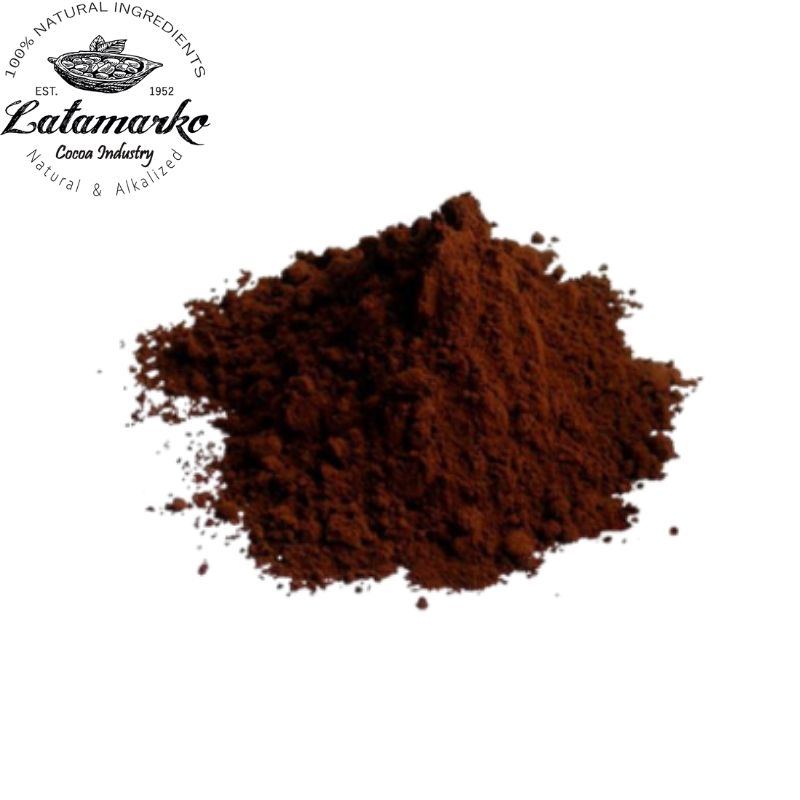
Emulsifiers:
-
- Often used to create a smooth and consistent texture.
Emulsifiers are indeed often used in food production to create a smooth and consistent texture in various products, including wafers. Emulsifiers play a crucial role in stabilizing the emulsion of water and fats, preventing their separation, and improving the overall quality of the product. Here’s how emulsifiers contribute to achieving a smooth texture in wafer products:
Functions of Emulsifiers in Wafer Products:
- Stability: Emulsifiers, such as lecithin, help stabilize the emulsion of fats and water in wafer batter or dough. This is particularly important when dealing with ingredients like fats, oils, and liquids, as emulsifiers prevent them from separating during mixing and baking.
- Homogeneity: Emulsifiers promote the uniform distribution of fat particles in the batter or dough. This results in a homogeneous mixture, preventing the formation of clumps or uneven textures in the final product.
- Improved Spreadability: In recipes where the wafer batter needs to be spread or coated evenly on baking surfaces, emulsifiers aid in achieving better spreadability. This contributes to consistent thickness and texture across the wafer layers.
- Texture Enhancement: Emulsifiers can positively impact the texture of wafer products by creating a smoother, more tender mouthfeel. This is particularly relevant for achieving the desired crumb structure and preventing the formation of undesirable textures, such as a greasy or gritty mouthfeel.
- Reduced Staling: Emulsifiers can contribute to extending the freshness and shelf life of wafer products by reducing staling. Staling is the process of changes in texture and flavor that occur over time, and emulsifiers help maintain the product’s quality for a longer period.
Common Emulsifiers Used in Wafer Products:
- Lecithin: Derived from sources like soybeans, sunflower seeds, or eggs, lecithin is a natural emulsifier widely used in the food industry. It is known for its ability to improve the dispersion of fats and enhance texture.
- Mono- and Diglycerides: These are glycerol-based emulsifiers commonly used to improve the stability of fats in various food products. They contribute to a smoother texture and help prevent crystallization.
- DATEM (Diacetyl Tartaric Acid Esters of Monoglycerides): DATEM is often used in baked goods, including wafer products, to strengthen the dough and improve texture. It acts as both an emulsifier and a dough conditioner.
Considerations:
- Dosage: The amount of emulsifier used is carefully controlled to achieve the desired emulsification without negatively affecting the overall characteristics of the wafer.
- Compatibility: Emulsifiers should be compatible with other ingredients in the recipe to ensure a synergistic effect. Compatibility testing is crucial for maintaining the intended texture and quality.
- Clean Label Preferences: In response to consumer preferences for cleaner labels, some manufacturers may choose emulsifiers with natural origins or explore alternatives that align with clean-label trends.
By incorporating emulsifiers into wafer recipes, manufacturers can achieve a smoother texture, enhance product stability, and improve overall quality, contributing to a more enjoyable consumer experience.

Stabilizers:
-
- Used to maintain the structure and prevent separation.
Stabilizers are ingredients that are commonly used in the food industry to maintain the structure of a product, prevent separation, and improve overall stability. In wafer products, stabilizers may be employed to enhance the structural integrity of the batter or dough, prevent moisture migration, and extend shelf life. Here’s how stabilizers contribute to the quality of wafer products:
Functions of Stabilizers in Wafer Products:
- Structure Maintenance: Stabilizers help maintain the structure of wafer batter or dough, contributing to the desired texture and consistency. They can assist in creating a stable matrix that holds the ingredients together.
- Prevention of Separation: In wafer products that contain multiple components, stabilizers can prevent the separation of ingredients, such as fats and water, during mixing, baking, and storage. This is crucial for achieving a uniform and stable product.
- Improved Freeze-Thaw Stability: Stabilizers can enhance the freeze-thaw stability of wafer products, making them resistant to texture changes when exposed to temperature fluctuations. This is particularly relevant for frozen wafer products.
- Moisture Retention: Some stabilizers have hygroscopic properties, helping to retain moisture in wafer products. This can prevent wafers from becoming excessively dry or brittle, contributing to a more pleasant texture.
- Texture Enhancement: Stabilizers can contribute to the overall texture of wafer products, influencing factors such as crispness, tenderness, and mouthfeel.
Common Stabilizers Used in Wafer Products:
- Guar Gum: A natural thickening agent and stabilizer derived from guar beans. It is often used to improve the texture and stability of various food products, including wafers.
- Xanthan Gum: A versatile stabilizer and thickening agent that can enhance the texture of wafer products. It is commonly used in gluten-free formulations.
- Cellulose Gum (CMC): Carboxymethyl cellulose (CMC) is a stabilizer and thickening agent that can contribute to the structure and texture of wafer products.
- Pectin: A natural stabilizer and gelling agent derived from fruits. While it is commonly used in jams and jellies, it may also be used in certain wafer formulations for its stabilizing properties.
Considerations:
- Dosage: The amount of stabilizer used is carefully controlled to achieve the desired stabilizing effect without negatively impacting the overall quality of the wafer.
- Compatibility: Stabilizers should be compatible with other ingredients in the recipe to ensure that they effectively contribute to stabilizing the product without causing undesirable interactions.
- Clean Label Preferences: Some manufacturers may consider using stabilizers with natural origins or exploring clean-label alternatives to meet consumer preferences for simpler ingredient lists.
Stabilizers are valuable tools in wafer production, helping manufacturers achieve the desired structure, prevent separation, and enhance the overall stability of the final product. The choice of stabilizer depends on the specific characteristics sought in the wafer and the overall formulation of the product.

Preservatives:
-
- Some products may contain preservatives for shelf life extension.
Preservatives are commonly used in the food industry, including in wafer products, to extend shelf life by inhibiting the growth of microorganisms, such as bacteria, yeast, and mold. They help maintain the quality, safety, and freshness of the product over an extended period. Here’s how preservatives contribute to the shelf life extension of wafer products:
Functions of Preservatives in Wafer Products:
- Microbial Growth Inhibition: Preservatives work by inhibiting or slowing down the growth of microorganisms, including bacteria, yeast, and mold. This helps prevent spoilage and the development of off-flavors or odors in wafer products.
- Mold and Fungus Prevention: Wafers, particularly those with certain coatings or fillings, can be susceptible to mold and fungus growth. Preservatives help control these issues and maintain the product’s visual appeal.
- Extended Freshness: By preventing the growth of spoilage microorganisms, preservatives contribute to the retention of the wafer’s freshness, texture, and overall quality over an extended period.
- Stability of Fats and Oils: In wafer products that contain fats and oils, preservatives can help prevent oxidative rancidity, preserving the quality of these ingredients and extending the overall shelf life.
Common Preservatives Used in Wafer Products:
- Sorbates (e.g., Potassium Sorbate): Effective against mold and yeast, potassium sorbate is commonly used as a preservative in various baked goods, including wafer products.
- Benzoates (e.g., Sodium Benzoate): Sodium benzoate is often used to inhibit the growth of bacteria and yeast in acidic products, such as those with fruit fillings or coatings.
- Propionates (e.g., Calcium Propionate): Calcium propionate is known for its effectiveness against mold and is used in some baked goods to prevent mold development.
- Antioxidants (e.g., Ascorbic Acid, Tocopherols): While primarily antioxidants, some substances like ascorbic acid (vitamin C) and tocopherols (vitamin E) can also have preservative effects by slowing down oxidative processes that contribute to spoilage.
Considerations:
- Regulatory Compliance: The use of preservatives is subject to regulatory standards and limitations, and their inclusion in food products must comply with applicable regulations in different regions.
- Impact on Flavor: Some consumers may be sensitive to the flavors of certain preservatives. Careful selection and dosage are important to ensure that the preservatives do not negatively impact the taste of the wafer product.
- Clean Label Preferences: With an increasing focus on clean labels, some manufacturers may explore alternative preservative options or natural preservatives to align with consumer preferences.
- Packaging Considerations: In addition to preservatives, proper packaging, including barrier materials and sealing, is important for maintaining the freshness and quality of wafer products during storage.
Preservatives, when used judiciously and in compliance with regulatory standards, are valuable tools for ensuring the safety and shelf life of wafer products, especially those with a longer shelf life or intended for distribution over extended periods. Manufacturers carefully consider the specific needs of their products and the preferences of their target consumers when incorporating preservatives into wafer formulations.

Colorings:
-
- Especially in confectionery, artificial or natural colors may be added for visual appeal.
Colorings are commonly used in the food industry, including confectionery products like wafers, to enhance visual appeal and create an attractive appearance. Both artificial and natural colors may be used to achieve desired hues and make the product more appealing to consumers. Here’s how colorings contribute to the aesthetics of confectionery, including wafers:
Functions of Colorings in Confectionery, Including Wafers:
- Visual Appeal: Colorings are primarily used to enhance the visual appeal of confectionery products, making them more attractive and enticing to consumers. The color of wafers can be customized to align with flavor expectations or to create a vibrant and eye-catching product.
- Flavor Identification: In some cases, colorings are used to help consumers identify the flavor of a product. For example, different colors may be associated with distinct fruit flavors or other taste variations.
- Brand Identity: The use of specific colors can contribute to brand identity, helping consumers recognize and associate a particular color scheme with a specific brand or product line.
- Seasonal or Special Editions: Colorings are often employed to create seasonal variations or special editions of confectionery products. For example, pastel colors for spring or red and green for the holiday season.
Types of Colorings:
- Artificial Colors: These are synthetic colorants that are chemically produced. They offer a wide range of vibrant and stable colors. Common examples include FD&C colors (certified by the U.S. Food and Drug Administration) like Red 40, Yellow 5, and Blue 1.
- Natural Colors: Derived from natural sources such as fruits, vegetables, and spices, natural colors are used as an alternative to artificial colors. Examples include beet juice (red), turmeric (yellow), and spirulina (blue-green).
Considerations:
- Regulatory Compliance: The use of colorings is subject to regulatory standards, and food manufacturers must comply with local and international regulations regarding permitted colors and their maximum allowable concentrations.
- Stability: Stability of color over the shelf life of the product is an important consideration. The choice of colorant, whether artificial or natural, should be made with stability in mind to prevent fading or changes in color over time.
- Allergen Information: Some natural colorings may be derived from common allergens, such as tree nuts or soy. Manufacturers should consider potential allergen concerns and provide clear labeling for consumers.
- Clean Label Preferences: With a growing preference for clean labels, some consumers may prefer products with natural colorings over artificial ones. Manufacturers may respond to this trend by using natural colorings in their formulations.
Colorings play a vital role in creating visually appealing and marketable confectionery products like wafers. The choice between artificial and natural colors often depends on factors such as regulatory requirements, consumer preferences, and the desired characteristics of the final product.

Sweeteners:
-
- Besides sugar, other sweeteners like corn syrup, honey, or agave nectar might be used.
Indeed, sweeteners play a crucial role in the formulation of confectionery products, including wafers. Beyond traditional sugar, various sweeteners, both natural and processed, may be used to achieve desired sweetness levels, texture, and other product characteristics. Here are some common sweeteners that might be used in wafers:
1. Sugar (Sucrose):
- Role: Provides sweetness, enhances flavor, contributes to browning during baking.
- Forms: Granulated sugar, powdered sugar.
2. Corn Syrup:
- Role: Adds sweetness and moisture, helps prevent crystallization, enhances texture.
- Forms: Light corn syrup, dark corn syrup.
3. Honey:
- Role: Imparts a distinct flavor, adds sweetness, contributes to moisture retention.
- Forms: Natural honey.
4. Agave Nectar:
- Role: Natural sweetener, similar to honey in sweetness, often used as an alternative to sugar.
- Forms: Agave syrup.
5. Invert Sugar:
- Role: Improves moisture retention, enhances sweetness, prevents crystallization.
- Forms: Often used as a syrup.
6. High-Fructose Corn Syrup (HFCS):
- Role: Sweetener with high fructose content, often used as an alternative to sugar.
- Forms: High-Fructose Corn Syrup 55 (HFCS-55), High-Fructose Corn Syrup 42 (HFCS-42).
7. Maple Syrup:
- Role: Adds a distinctive flavor, provides sweetness.
- Forms: Natural maple syrup.
8. Molasses:
- Role: Adds sweetness and a rich flavor, contributes to browning.
- Forms: Light molasses, dark molasses.
Considerations:
- Sweetness Level: Different sweeteners vary in sweetness levels, and their use in wafer recipes should be carefully adjusted to achieve the desired level of sweetness.
- Flavor Profile: Each sweetener contributes a unique flavor profile. Honey, maple syrup, and molasses, for example, impart distinctive tastes that can enhance the overall flavor of wafers.
- Moisture Content: Some sweeteners, like honey and corn syrup, contribute to the moisture content of wafers, affecting their texture and shelf life.
- Crystallization: Certain sweeteners, including sugar, honey, and corn syrup, can influence crystallization in confectionery products. Invert sugar and corn syrup are often used to prevent or control crystallization.
- Functional Properties: Sweeteners may have additional functional properties, such as contributing to browning, enhancing mouthfeel, or acting as a humectant to retain moisture.
- Dietary Considerations: Some sweeteners, like agave nectar and maple syrup, are often marketed as natural or healthier alternatives. Manufacturers may consider these options to meet specific dietary preferences.
The choice of sweeteners in wafer formulations is influenced by factors such as taste preferences, desired product characteristics, and market trends. Manufacturers often experiment with different sweeteners and blends to achieve the optimal balance of sweetness, texture, and flavor in their wafer products.
Understanding the quality and sourcing of these raw materials is essential for creating high-quality sweets, chocolates, and wafers. The combination of these ingredients, along with precise processing techniques, contributes to the unique and delightful characteristics of each product.

Welcome to MT ROYAL CO – Your Premier Source for Quality Raw Materials!
AtMT ROYAL CO, we take pride in being a leading supplier of top-notch raw materials, catering to diverse industries. Our commitment to excellence extends from the sourcing of premium materials to providing unparalleled convenience through direct sales from our state-of-the-art factories.
Key Features:
- Premium Raw Materials: We specialize in sourcing and supplying the finest raw materials that meet the highest industry standards. Our extensive range covers [list of materials], ensuring you get the best for your production needs.
- Factory-Direct Sales: Cut out the middleman and experience seamless transactions with our factory-direct sales. By eliminating unnecessary layers, we streamline the process, offering you not just quality but also cost-effectiveness.
- Negotiable Payment Terms: We understand that flexibility is crucial for your business. That’s why we offer negotiable payment terms tailored to suit your unique requirements. Our aim is to foster long-term partnerships built on trust and mutual benefit.
- Reliable Supply Chain: With a robust and reliable supply chain, we ensure timely deliveries, preventing disruptions in your production schedule. Count on us for consistency and dependability.
How It Works:
- Browse Our Catalog: Explore our comprehensive catalog showcasing a wide range of raw materials. Find exactly what you need for your industry.
- Contact Us: Reach out to our dedicated team to discuss your requirements, request a quote, or seek expert advice.
- Negotiate Your Terms: Work with us to create a payment plan that aligns with your financial preferences. We believe in open communication and transparent dealings.
- Enjoy Direct Sales: Once terms are agreed upon, experience the convenience of direct sales from our factory to your doorstep. It’s that simple!
At MT ROYAL CO, we’re not just suppliers; we’re partners in your success. Elevate your production capabilities with our quality raw materials, direct sales model, and flexible payment options.
Contact us today and let’s build a future of excellence together!


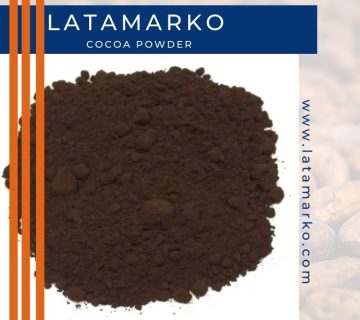
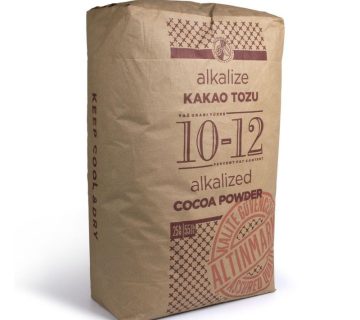
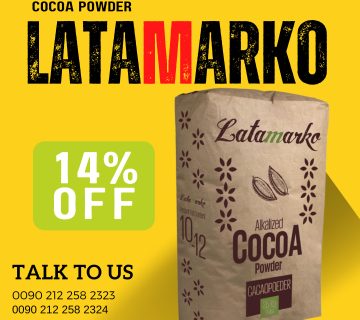
No comment